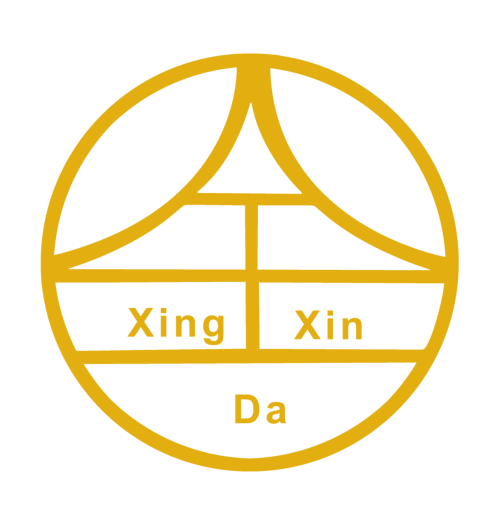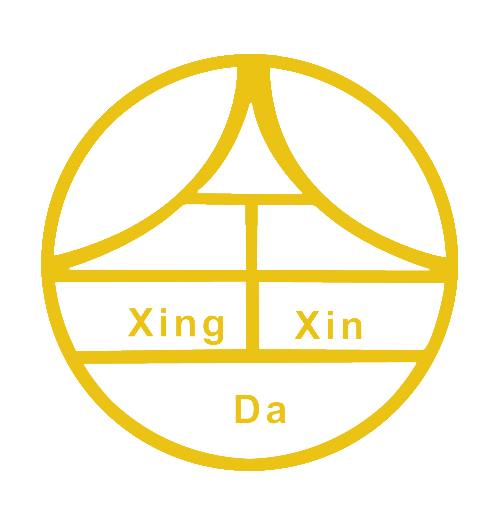The Evolution of Custom Embroidery Techniques
Traditional Hand Stitching vs. Modern Machine Embroidery
Embroidery stands out as one of those arts where every stitch tells a story. Traditional handwork remains unmatched when it comes to fine details, especially in places like China's Suzhou region or India's Kantha tradition, where artisans create stunning patterns passed down through generations. Things changed quite a bit though once technology stepped into the picture. Multi needle machines revolutionized what was possible in terms of speed and consistency. While nothing beats the human touch for certain projects, these machines handle repetitive work so much better than fingers ever could. Industry insiders note that factories using this tech can churn out products faster while spending less on labor overall, which explains why many businesses prefer going this route nowadays despite the initial investment.
The move toward machine embroidery shows what consumers really want these days consistency and faster production times. According to Technavio research, there's been a noticeable increase in demand for customized clothing items lately because machines can produce consistent designs much quicker than handwork. Traditional embroidery hasn't lost its charm though many people still appreciate the artistry and heritage behind it. But when businesses need to scale operations and keep costs down in this competitive marketplace, machine embroidery makes more sense economically speaking. That's why so many manufacturers are turning to these newer methods despite the sentimental value attached to older techniques.
Digital Innovations in Embroidery Design
The world of custom embroidery has changed dramatically thanks to digital tech. Computer aided design or CAD lets artists create complex patterns that would have been impossible just a few years ago. What really stands out about this shift? Software programs such as Wilcom and Hatch are doing wonders for how we approach embroidery work today. They cut down on time spent designing while still giving professionals plenty of creative freedom. And let's not forget about 3D embroidery techniques which are becoming increasingly popular among makers. These methods add real depth and texture to designs through clever use of shadow effects and highlight contrasts, making finished pieces look much more eye catching than traditional flat embroidery ever could.
A few forward thinking companies have really caught on to these new digital tools, creating some pretty cool stuff and getting good reactions from customers too. Take brands using digital embroidery tech for example they tend to get people talking because their designs are so detailed and stand out from the usual stuff on shelves. The mix between artistic flair and computer power in this kind of embroidery work definitely hits what consumers want today. But beyond just meeting current trends, it opens doors for all sorts of creative possibilities when making personalized clothing items that weren't possible before.
Minimalist Embroidery and Bold Typography
Minimalist embroidery has really taken off lately within the world of custom embroidery work. The whole idea centers around simple shapes and lots of empty space, letting the actual fabric show through as part of the design itself. We're seeing this style pop up everywhere from throw pillows to t-shirts these days, where small details speak volumes about good taste without shouting too loud. At the same time though, there's been a real surge in popularity for bold lettering styles too. People just want to put their own stamp on things now, right? That's why we've noticed so many customers asking for stuff like jackets or hats with big letters spelling out whatever catches their fancy. It makes sense when you think about how much personality folks want to showcase these days.
Recent surveys show that people are getting really interested in minimalist and bold typographic embroidery lately. According to several trend reports, there's been a noticeable jump in demand for these simple but eye-catching designs, which is changing how markets operate and where creativity is headed. Fashion brands across the board are putting money into new lines that match this growing taste. Take for instance those plain white tees with just one striking word embroidered across them, or cushions featuring clean geometric lettering patterns. These items seem to appeal particularly well to shoppers who want something distinctive without going overboard on style.
Vintage-Inspired Patterns and 3D Textured Effects
People are getting really into vintage style embroidery again lately, probably because it just feels so good to connect with something old fashioned. The designs we see today borrow heavily from what our grandmas used to stitch on their aprons back in the day, and honestly? A lot of folks just love how these retro looks never go out of fashion. What makes them even cooler now is all the new stuff happening with embroidery tech. Puff stitches and layered effects give fabric a real 3D feel that wasn't possible before. When someone runs their fingers over these pieces, they can actually feel the depth and texture, which totally changes how we interact with clothing and accessories. For crafters looking to stand out, these techniques open up whole new worlds of creativity while still keeping that warm, familiar vibe people crave.
Big name fashion houses and independent designers alike are jumping on board with this movement, creating standout items that mix old school looks with richly detailed embroidery work. Market research shows people are increasingly drawn to throwback styles across clothing lines and household goods, which explains why this look keeps gaining traction. What we're seeing isn't just nostalgia for bygone eras though. There's definitely a contemporary angle here too, as shoppers want clothes that look good while feeling something special when touched. Take those classic flower patterns now printed onto sleek modern cuts, or fabrics with complex textures that catch the eye and hand alike. These creations are putting a fresh spin on what embroidery means today.
Popular Applications: From Baseball Hats to Iron-On Patches
Embroidered Baseball Hats as Fashion Statements
Baseball caps with embroidery have moved way beyond just being something athletes wear during games. They're now big time fashion statements too. Companies such as New Era and Nike played a major role in changing how people see these hats, mixing together elements of street style with their original sports roots. What makes embroidered caps special isn't just about showing off logos bigger than life. People love putting their own twist on them through different stitch patterns and colors, which turns every cap into something one-of-a-kind. Sales numbers tell an interesting story here too. Industry insiders point out there's been quite a jump in popularity for all sorts of embroidered clothing lately, particularly those classic caps we're talking about. The reason? Customization has become huge among fashion lovers who want something that stands out from mass produced items. Take Supreme for instance. Their designers really got ahead of the curve when it comes to creating signature looks using custom embroidery techniques. These creations hit right at what younger generations are looking for in their wardrobe choices nowadays.
Versatility of Iron-On Patches for Customization
Iron on patches are becoming all the rage when it comes to customizing clothes, especially among kids and teens these days. People stick them on everything really - sometimes to fix holes in jackets, other times just because they want something different looking or make a fashion statement. Market stats show that sales of custom made patches have gone through the roof lately, as folks increasingly seek out stuff that stands out from mass produced items. Retailers have caught onto this wave too, lots of them now offer patch programs as part of their marketing strategy. Take Levi's for instance, they started letting shoppers add special patches to their jeans back in 2019, which helped bring people into stores and build loyalty over time. What makes this work so well is how versatile patches actually are, turning simple denim into something totally unique while still keeping things affordable compared to buying completely new outfits.
Sustainability and Ethics in Custom Embroidery
Eco-Friendly Materials and Organic Threads
The world of custom embroidery is going green these days, mainly because people want to work with materials that don't harm the planet. Companies have started taking notice of their environmental footprint and are looking harder for ways to get sustainable embroidery supplies. Names like Madeira and Gutermann stand out in the market for making organic threads, which cuts down on pollution compared to regular thread production methods. We're seeing more folks ask for clothes made sustainably too. A recent poll found around 60 percent of shoppers would actually spend extra bucks on items labeled as eco-friendly, showing just how big this movement really is. If a brand wants to claim it's genuinely green though, it needs proper credentials like GOTS certification or OEKO-TEX standards. Getting these approvals makes sure everything checks out behind the scenes while building trust with customers who care deeply about what goes into their wardrobe choices.
Upcycling Fabrics with Embroidery Accents
Fashion has seen a real shift toward upcycling lately, especially when it comes to custom embroidery work. Basically, people are taking old fabrics and turning them into something totally new, which cuts down on all that textile waste piling up everywhere. Companies such as Patagonia and Reformation have made this part of what they do, adding those beautiful hand-stitched details that make their pieces stand out from mass-produced stuff. What makes this interesting isn't just about green shopping habits though. There's actually a whole community aspect developing around making clothes sustainably. Local groups run classes where folks learn how to transform discarded materials into stylish items, teaching skills while building connections between neighbors. Looking at the numbers tells another story too. Research indicates upcycling helps slash carbon footprints and keeps tons of fabric out of landfills each year. According to recent findings from the Ellen MacArthur Foundation, interest in these practices has grown steadily at around 15% per year as more shoppers rethink their buying patterns. So rather than being some passing fad, what we're seeing now looks like a genuine long-term change in how people think about clothing consumption.
The Rise of Personalized Embroidery in Branding
Monogramming and Custom Logos for Corporate Merchandise
Custom embroidery plays a big role in building brands these days, particularly when it comes to adding monograms and company logos on things people wear. More and more businesses are putting stitched designs on work clothes, t-shirts, and other gear to make sure everyone knows who they belong to while creating that special feel for staff members and customers alike. Take Gildan or Fruit of Loom for example both companies have really made waves by incorporating personalized touches into what they sell, which apparently helped boost repeat business and overall revenue numbers. Industry folks say there's solid data showing that companies investing in embroidered stuff tend to see better bottom line results too. People just seem to value those personalized items more somehow, maybe because they look fancy or feel unique, whatever the reason, this approach definitely helps keep customers coming back again and again.
Consumer Demand for Unique, Handcrafted Designs
Mass production has made everyone look the same, yet folks are getting more interested in one-of-a kind handmade stuff these days. People really want something real and different when they shop for clothes, which explains why personalized items have become so popular. Studies show that wanting to express oneself matters a lot here, and researchers keep finding evidence that personal touches change how we spend money. Companies like CustomInk and Zazzle saw this coming and started selling custom embroidered gear to small groups who wanted something special. According to surveys, many shoppers will actually spend extra cash on things that feel unique because they see them as keepsakes instead of just regular products. What we're seeing now isn't just about embroidery anymore it reflects how our tastes are changing in general.





